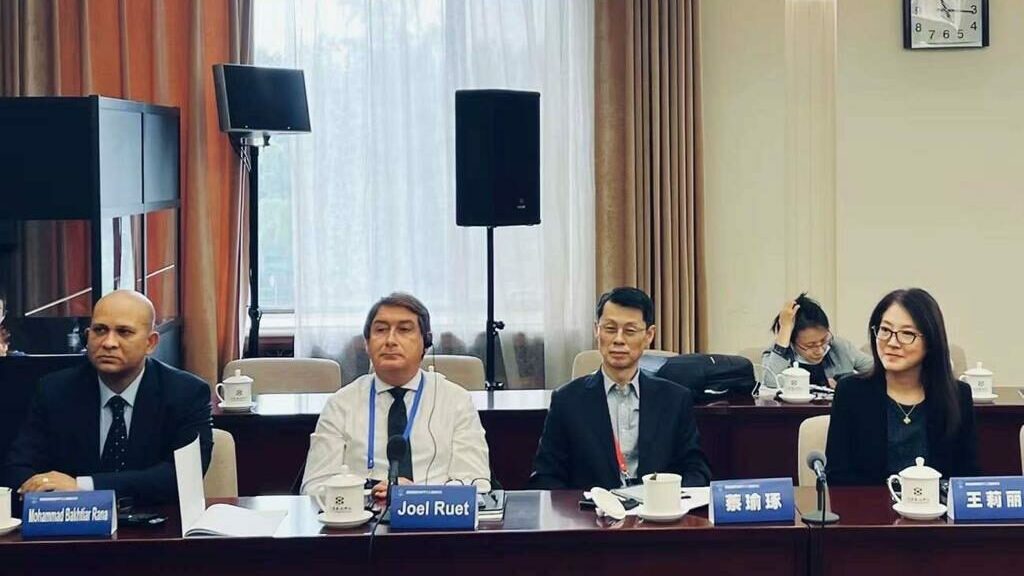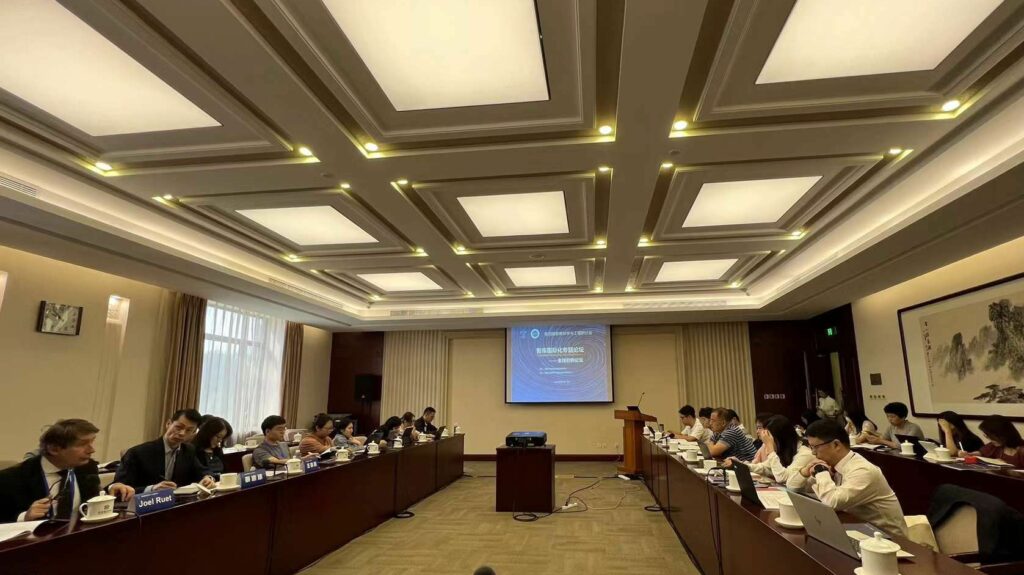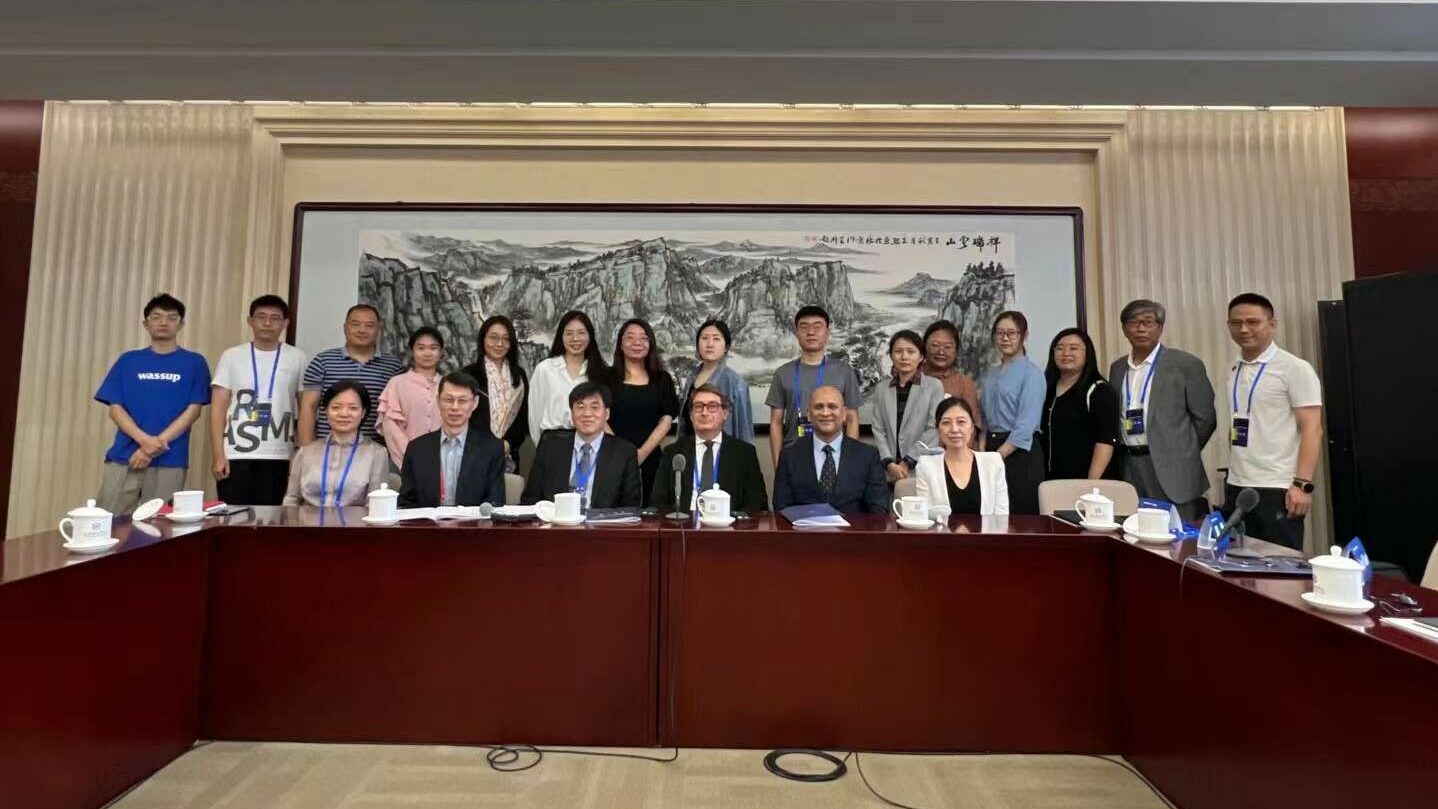Building on The Bridge Tank’s long-time partnership with the Institutes of Science and Development of the Chinese Academy of Sciences (CASISD), China’s leading research institute, Joel Ruet was invited to hold a keynote speech at this year’s Forum on Cooperation and Governance of Global Science, Technology and Innovation. The Forum, which took place in Beijing on September 25th 2023, is China’s most important annual conference on innovation.
The Bridge Tank and CASISD signed a MoU in 2018. Joel Ruet previously intervened in the opening session of the World Internet Conference organized by CASISD in November 2020.
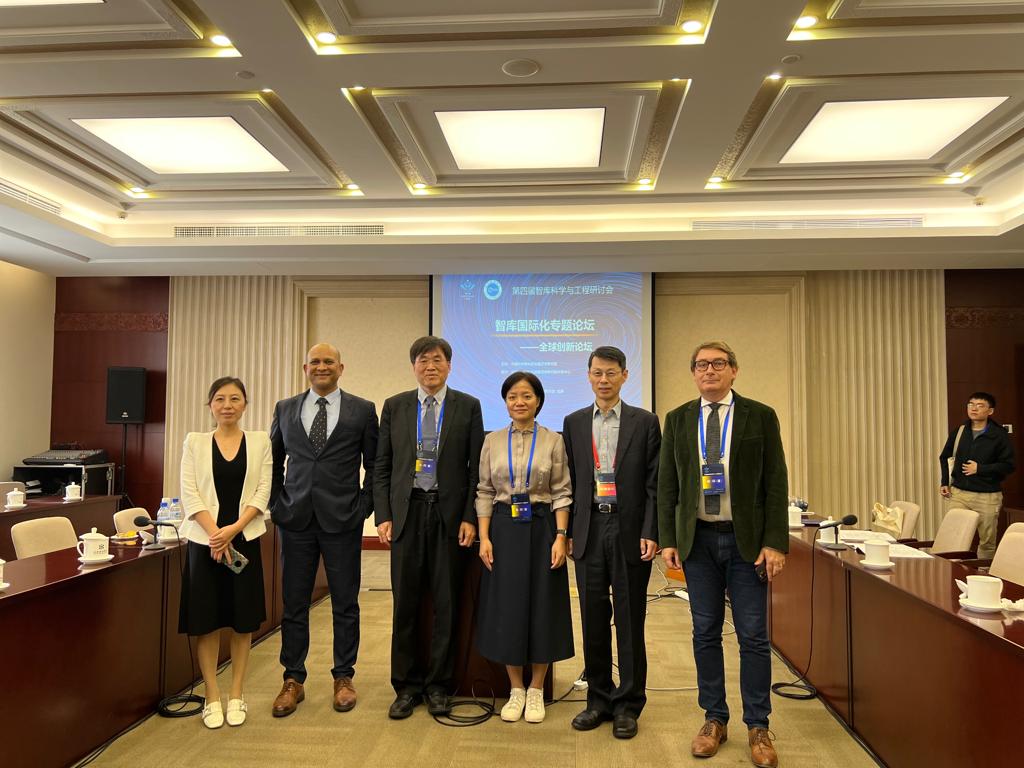
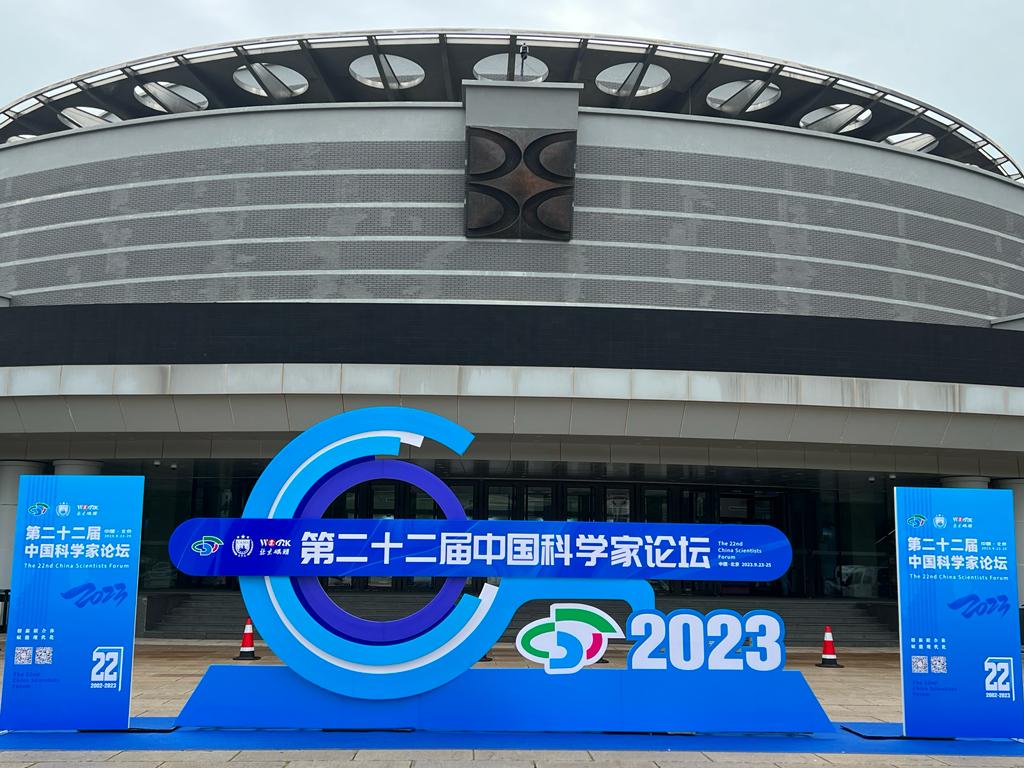
In the context of China’s gradual reopening to the world, Joel Ruet’s keynote speech to the Forum addressed crucial themes of global innovation, research, technology development and dissemination in times marked by the de-risking of relations with China.
Global innovation navigating uncertain times of de-risking
2023 will have witnessed the de-risking of EU-China relations become the new normal in Europe’s engagement with China. The idea of “de-risking rather than decoupling” has made it all the way into the Oval Office, as the United States increasingly rely on this approach in their relations with China.
Cooperation in core technologies linked to fundamental research (e.g. nuclear, genomics, AI) is also affected by this trend towards de-risking, Mr Ruet noted. Still, some common challenges remain which ensure a global acceleration of solutions. These will require “technology diplomats” to find a modus vivendi.
- In nuclear power, fast breeder reactors, safety questions, non-proliferation technologies, fuel alternatives (e.g. thorium), or nuclear fusion are all “risks” which have already been taken, as China is already a nuclear-weapon state. The journey towards a safer, cleaner, non-military linked nuclear sector is thus to be taken jointly.
- In genomics, Mr Ruet noted that France and China did cooperate in Wuhan’s virology centre. At the time of the COVID pandemic, sharing the DNA sequence proved useful in developing vaccines faster: at times when several coronaviruses have been identified as potentially mutable and harmful, international transparency and cooperation is more than ever needed. The UNGA just approved the idea of a common fund for the development of vaccines and the fight against epidemics. This is something The Bridge Tank had been advocating in 2020, alongside Liberal International and Socialist International. Virology should therefore be another sector beyond de-risking.
- AI is arguably different, as its results may translate much faster and wider into regulations of society or even “control.” Here the “systemic rivalry” may make cooperation more difficult. However, technology diplomacy is needed here as well and talks will have to be kept alive, possibly with the mediation of think tanks.
On research, technology development and technology dissemination
Innovation was never “global,” Joel Ruet argued. While science is a commonly accepted status of truth and research offers cooperation opportunities, technology development is not the preserve of research institutions but involves companies and markets. Science may be kept common through publications and fundamental research (e.g. ITER in nuclear fusion).
However, it appears that all technologies that serve the ecological transition are becoming not only competitive but also “competitive advantages”. This is the case in China through a research-technology push in which the Chinese Academy of Sciences is central; in the EU through a green deal and regulation packages that increasingly move towards “new competitive advantages” (in carbon, materials, human impact etc.), or simply through subsidy-based attraction in the US.
Here, a policy dialogue is important. It should gather on a common platform scientists, technologists, trade and investment policy makers and national security policy makers. Indeed, the latter need to be included as concrete US rivalry measures on semi-conductors are for instance the result of the convergence of a double process that can be traced back to the 2012 US State Department report triggered by the China 2025 policy, and on the other hand the debate launched by Ms Pritzker under the Obama administration on risks to innovativeness resulting from a delocalised Chinese economy (something previously discussed in Chapter 5 of ISPI’s “China’s Belt and Road: A Game Changer?”).
Though science, research, technology, and economics may not necessarily be linked, in the current state of de-risking -as well as in China’s policy framework- they have undoubtedly become so. Their governance has to involve different streams of policy makers, pointing to another possible role for think tanks and CASISD. It is to be noted that NATO has interestingly taken up the technology agenda through finance by launching a private equity fund to de-risk startups from “needing Chinese money”.
On technology dissemination
The ecological transformation notably implies technology dissemination in conjunction with market innovation, Mr Ruet noted. “Technology transfers” seldom arise without innovation and are in fact a driver of the latter, alongside companies.
The role of China as a marketplace and of Chinese technological companies in new materials, new energies, and new mobilities is to be analysed properly.
The Bridge Tank’s past works have shown that technology “transfers” didn’t happen through joint ventures but through suppliers, through ecosystems arising from project capitalization, through state-led learning; all of these as a “technology for markets” deal between global companies and China. One should note this corresponds neither to classical trade economics nor to developmental economics. This has been a Chinese idiosyncrasy.
As China has caught up with the world, “technology for markets” is not possible anymore: only “technology for technology” or “market for market” approaches are left to be explored.
Joel Ruet argued that each one of them is difficult in isolation and unlikely in times of de-risking. Both attempted together as a form of tit-for-tat may be the future. While technology for technology bottlenecks were what Mr Ruet had discussed so far; a “market for market” approach that would paradoxically be the return to canonical trade economics has been eliminated under the format of the EU-China investment treaty, as new competitive advantages are getting designed around societal values.
Only a global EU-China discussion combining research, technology, trade and investment may see some -although thin- possibility of cooperation arise.
This is however not what has happened recently and this is where the technology community has a role in conveying the needs for the planet while keeping de-risking in mind.
